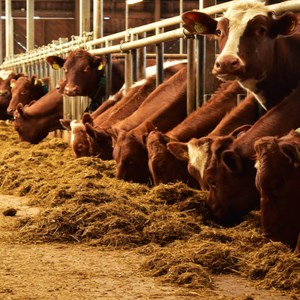Contact
Department of Applied Animal Science and Welfare, Forage utilisation

This project aims to improve feed efficiency (FE) in dairy production by introducing new technology and digitalization (analysis of large data) and thereby develop new practical methods to include FE in dairy cattle genetic improvement, feeding and managements. The results of the project will significantly improve sustainability, profitability and decrease the environmental footprint of the value chain. We will evaluate modern and highly accurate on-line technologies for determining gas exchanges and FE of dairy cows.
Feed efficiency (FE) is an important trait as it has a major influence on profitability and environmental efficiency in the dairy industry. FE of dairy cows has improved as a result of increased productivity. Currently FE is measured as residual feed intake (RFI) that is a difference between observed and predicted intake. However, the potential for further improvements in FE by increased productivity is rather limited. Difficulties in measuring feed intake on farm conditions has limited the progress in selecting dairy cows for improved FE. Heat production from dairy cows is strongly related to CO2 production, and therefore residual CO2 (R CO2) could be used as a measure of FE similarly to RFI provided that CO2 production can be measured on farm conditions. Our earlier analysis of respiration chamber data, showed that R CO2 has a potential for ranking individual cows based on FE without the need for measuring feed intake and this was based on solid concepts. However, the high cost and labour demand of the respiration chamber will limit its applicability on a large scale. The GreenFeed (C-Lock Inc.) system is a promising alternative. The aim of this project is to evaluate potential of using residual CO2 (R CO2 ) as an index of feed efficiency on farm conditions without feed intake measurements and to develop models predicting residual feed intake (RFI) and residual ECM (RECM) production from R CO2 and other on-farm traits.
A dataset from GreenFeed studies is collected and analysed to determine between-day, diurnal variation, and repeatability of CO2 production to optimize the length of measurement period. Models predicting CO2 from GreenFeed data are evaluated. A feeding trial will be conducted to evaluate the effects of animal variables on CO2 production. Finally the models predicting RFI and RECM from RCO2 and other variables will be developed.